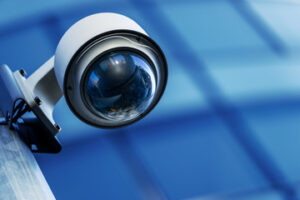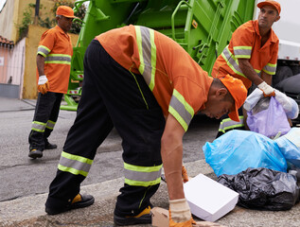When used in film production, remote monitoring allows the director to view all cameras’ shots live and simultaneously on a single screen. This saves time by eliminating the need to walk up to each shot on a multicamera set.

Most criminals and trespassers will give it a second thought before they attempt to commit a crime or vandalism when they know that their activity is being monitored in real-time. Keep reading the article below to learn more about Remote Camera Monitoring.
One of the primary reasons homeowners and businesses opt to install a surveillance camera system is because of their ability to remotely monitor the premises in real-time. Remote monitoring offers the convenience of securing property and providing peace of mind, at a fraction of the cost of hiring security personnel. Moreover, it is simple to set up and use, making it a popular choice for those who have little technical experience.
The most popular way to use a remote monitoring solution is by using an app on your smartphone or computer. This software allows you to see a live feed from your home or business, whether you’re at work or on vacation. There are many different software options available, ranging in complexity and functionality. Choosing a program that matches your needs and level of technical ability will ensure you get the most out of your system.
Another common use for a remote monitoring system is in film production and broadcasting. Similar to the behind-the-scenes shots you might see during a live sporting event or newscast, a remote monitoring system lets producers and directors see all of their cameras’ feeds in real time from a central location. This allows them to make quick adjustments and ensures that every shot comes out exactly how they want it to.
Similarly, remote monitoring systems can also be used to track employee performance and productivity. In the case of a business, this may be useful for identifying areas where you’re losing money or customers and developing strategies to improve those areas. For example, if you notice that an employee is not answering customer inquiries in a timely manner, you might consider offering additional training or implementing a new protocol to encourage quicker responses.
Using a remote monitoring system for business purposes also provides an opportunity to identify good employees and reward them accordingly. This can boost morale, help to frame the perception of a surveillance system, and ultimately benefit your bottom line. For example, if you implement a new customer service policy and see an increase in sales, you might reward the employee responsible for the positive change with a small bonus.
Reduced Costs
When planning a business security system, the total cost of ownership (TCO) should be taken into account. This includes the initial purchase of cameras, recorders and video management software, as well as installation charges. Recurring costs such as power and maintenance charges should also be factored in.
Video remote monitoring helps reduce these recurring costs. By reducing the need for an on-site security guard, businesses can cut costs associated with wages, training, insurance and health and safety risks.
In addition, a remote monitoring service can help to mitigate the risk of false alarms. A trained surveillance professional will be able to see whether an alarm is genuine or not, which can save on expensive police fines. This can also ensure that emergency services are only called out to incidents that require their attention, which is better for everyone involved.
Moreover, remote monitoring can improve the efficiency of an on-site security team. For example, the use of motion sensors and intelligent video analytics can enable the system to detect suspicious activity and alert security staff automatically. This means that a site can be monitored with just one or two people, which reduces operational costs.
Video monitoring can also be used for positive reinforcement, to show employees that the system is there to protect them and will have their back if they are ever faced with an incident or lawsuit. This can provide peace of mind for small business owners and can reduce employee turnover, which is another big expense for many companies.
Finally, remote monitoring is a great way to keep an eye on how your building and premises are holding up during adverse weather conditions. From wildfires and floods, to earthquakes and blizzards, remote monitoring can give you peace of mind that your sites are safe. This is particularly helpful if you have remote or rural properties, where it can be difficult to travel in the event of an emergency. Fortunately, a remote monitoring service will let you know whether the property is in danger and will contact the appropriate authorities to take action.
Enhanced Security
When CCTV remote monitoring is configured properly, it is very effective in spotting security breaches and intruder activity. When paired with advanced analytics, it can even identify suspicious behavior and send an alert to your security team for rapid response. This allows for a more secure environment and a lower risk of theft, vandalism, loitering, and other forms of property damage.
By reducing the need for security guards to be on site, a business can save on salaries and other related costs. Additionally, a CCTV system can monitor a larger area than a single security guard can patrol. This is especially important in sensitive settings, such as banks, commercial properties, and sensitive government facilities.
Having remote access to your camera surveillance system can also save time and money when troubleshooting potential problems. For example, if your cameras are experiencing issues such as broken lenses, poor connections, or shaky footage, you can fix them without having to physically visit the site. In addition, you can use a live feed to assess the impact of natural disasters such as wildfires, floods, and ice storms.
Cameras can be viewed anywhere with an Internet connection through a web browser or app on a smartphone, tablet, or computer. You can also share the live video feed with first responders for enhanced security and faster response times. The best cameras have high-resolution imaging, night vision capabilities, and low light capabilities to provide clear images.
Additionally, remote monitoring is a good option for businesses that want to protect their property from vandalism and other security threats. For instance, you can remotely monitor your construction site and quickly check if someone is loitering on the premises. You can also use remote monitoring to keep an eye on your company’s assets and equipment in the event of a fire, theft, or other emergency.
It is important to note that CCTV remote monitoring requires a reliable and fast Internet connection to transmit footage in real-time. Therefore, you should always have a backup plan in place to ensure that you can still monitor your premises in the event of an outage. It is also essential to follow the manufacturer’s instructions and set up your network infrastructure correctly. This includes securing the network infrastructure through firewalls and VPNs to prevent unauthorized access and to safeguard privacy and security. You should also implement a robust password policy and regularly update the firmware and software of your camera systems to reduce hacking opportunities.
Increased Customer Satisfaction
Whether you are on vacation and want to check in on your home, or you are running a store and want to see how customers move around the store, remote monitoring allows you to access your cameras anytime, anywhere. This is especially useful for companies that have multiple locations, or even a single location with a large property (for example a ranch or farm). Being able to monitor your cameras remotely will allow you to view what is happening, and can save a lot of time.
It also lets you spot problems quickly and correct them before they become bigger issues. For instance, if a security alarm goes off, a remote monitor will instantly notify you allowing you to select the specific camera that has been activated – so you can take the appropriate action. This can also help to reduce the number of false alarms as you are able to review the footage and ensure the cameras have not been tampered with.
Additionally, if you have cameras installed on shelves and displays, you will be able to keep track of stock levels, and will know exactly when it is time to restock. This will save you time, as well as money, as you won’t need to hire someone to do this for you.
Finally, if you use your camera systems to monitor employees and visitors, you can see that all safety standards are being followed, which will in turn reduce employee complaints and possible liability claims against your company. Additionally, if you notice that a certain area is having issues, such as accidents or poor customer service, you can use the footage to identify the issue and implement new protocols to prevent it from occurring again in the future.
While the benefits of remote camera monitoring are obvious, it is important to remember that you can’t be everywhere at once. This is particularly true when working in the film and video production industry – between location scouting, production meetings, and actual filming on set, it can be difficult to keep tabs on everything that is going on. Luckily, remote monitoring can give you peace of mind by giving you the ability to watch what is happening at any time, no matter where you are.
